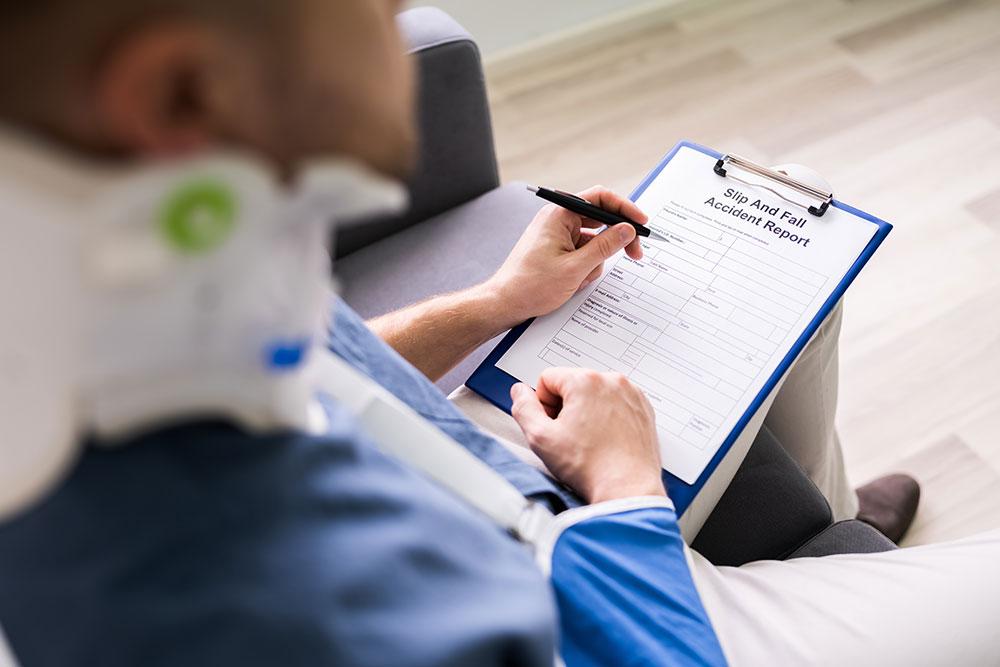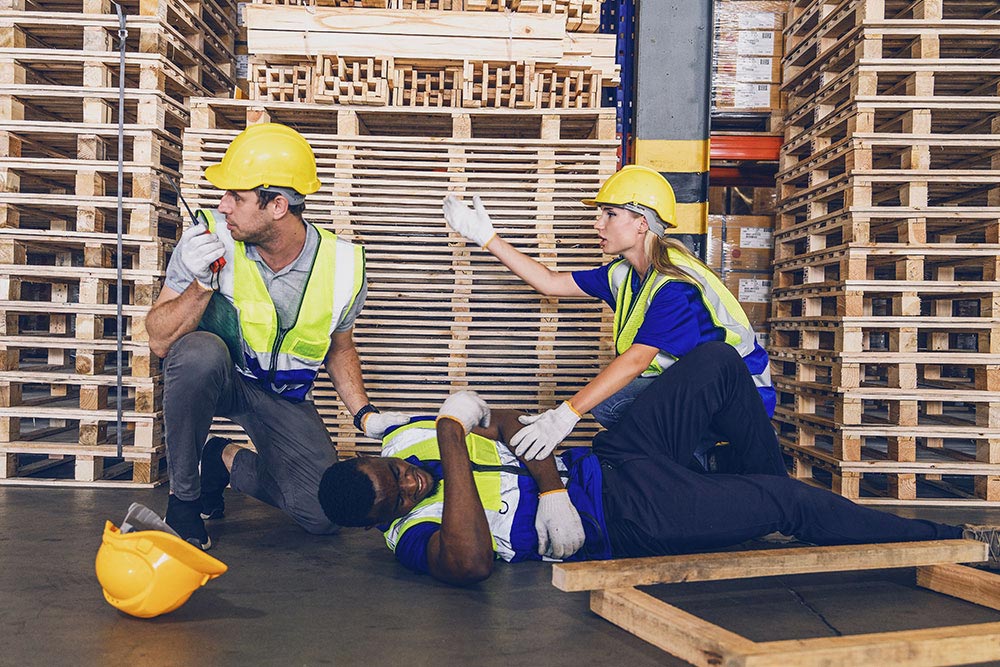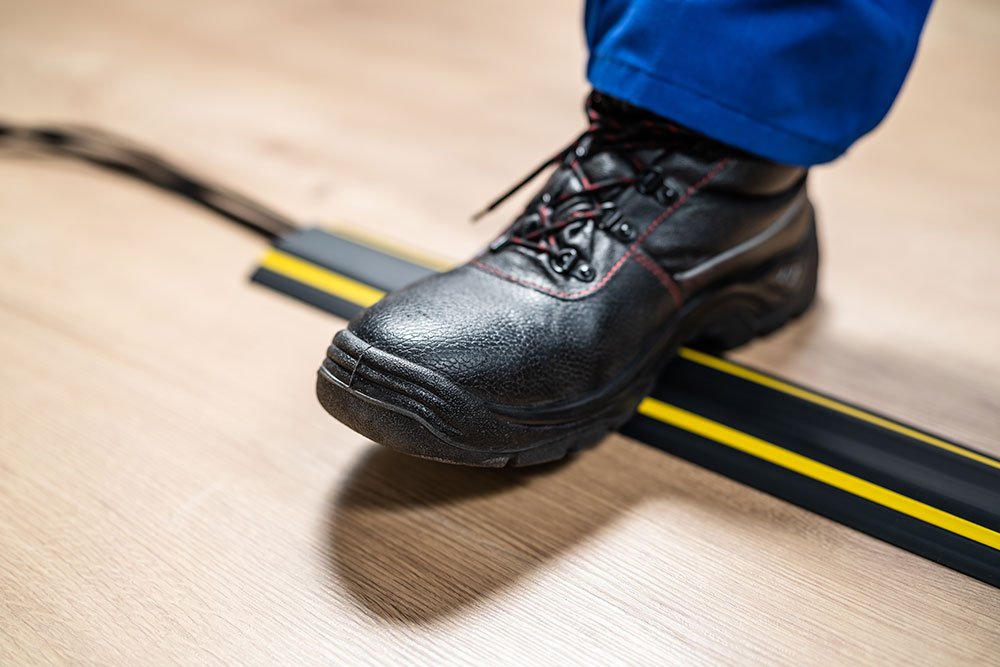
Have you ever wondered what’s the most common cause of workplace injuries in the UK? The answer is slips, trips and falls. Yes, falling flat on your face at work can be more than just embarrassing. You run the genuine risk of doing yourself serious harm.
Despite ongoing efforts to educate employers and employees, many people are injured by slips, trips and falls on the same level every year. But how many people suffer from slips, trips and falls at work in the UK? The most recent statistics on slips, trips and falls might surprise you.
Slip, Trip and Fall Statistics
While the HSE’s Health and Safety at Work report isn’t a cheerful read, it contains valuable information everyone who owns or manages a business should know.
The most recent Health and Safety at Work report revealed that in 2022-23:
- 561,000 reported cases of non-fatal workplace injuries occurred
- 32% of these were made up of slips, trips and falls on the same level
- 179,520 people were injured by slips, trips and falls in the recorded period
The HSE estimates that 95% of all slips, trips and falls on the same level at work are serious incidents that result in broken bones.
Statistical Accuracy
The Health and Safety at Work report contains summary statistics based on information from sources such as the Reporting of Injuries, Diseases and Dangerous Occurrences Regulations (RIDDOR) reports and the Labour Force Survey (LFS).
The Office for National Statistics (ONS) collects the HSE’s data. ONS data has a reliability rate of 85%. The HSE states they are 95% confident that their statistics represent the actual value. They leave themselves a 5% margin for sampling errors.
Unreported Incidents
Some analysts believe that significant workplace injuries aren’t reported to authorities. Unfortunately, since they weren’t registered, we can only guess the actual number of slips, trips and falls that occur.

Indeed, some data shows that investigations by the HSE into workplace incidents have decreased in recent years. This is thought to be because of problems with funding and staffing. The HSE says they are ramping up their recruitment drives to ensure they have enough people to maintain their regulatory work.
Ultimately, we must take the HSE’s statistics on slips, trips and falls at face value. They show there are still far too many serious workplace slips, trips, and falls in the UK.
Slip, Trip and Fall Rates by Employment Sector
Every type of workplace has significant tripping and slipping hazards. All you need is a floor or a patch of ground and something that makes it hard to get a proper grip or gets in your way. And that, unfortunately, can be pretty much any place.
Some industry sectors are more hazardous than others. That’s obvious. A construction site is a much more dangerous work environment than a menswear store, for example. When we look at the HSE figures, the top five sectors with the most reported non-fatal workplace injuries are:
- Agriculture, forestry and fishing
- Construction
- Accommodation/food service activities
- Wholesale/retail trade/repair of motor vehicles
- Transportation/storage
The Cost of Slips, Trips and Falls to the UK Economy
Around 3.7 million working days were lost due to non-fatal workplace injuries in 2022-23. The costs of workplace injury and new cases of work-related ill health amounted to £20.7 billion in the 2021-22 period, according to the HSE’s Health and Safety at Work report. Around 37% of this figure was due to workplace injuries.
It’s not all doom and gloom, however. Compared to other European countries, the UK has lower rates of fatal workplace injuries and comparable rates of workplace non-fatal injuries. And it seems that people are becoming more aware of health and safety issues and that recent legislation is impacting them. The self-reported non-fatal workplace injuries per 100,000 workers show a downward trend below 2018-19 levels.

This is excellent news, but we should still do our best to get these numbers down.
How to Prevent Slips, Trips and Falls at Work
Preventing slips, trips and falls on the same level at work requires employers and employees to make an effort. It’s impossible to remove all risks, of course.

Still, if you follow the tips below, you should be able to reduce the likelihood of slips, trips and falls at your workplace:
- Perform regular risk assessments
- Keep your workplace clean, neat and tidy
- Ensure all employees have suitable footwear
- Put up warning signs to alert people to obstructions and hazards
- Install adequate lighting
- Install slip-resistant flooring and non-slip mats
- Keep your floors in good condition
- Ensure cables and cords are not tripping hazards
- Clean up any spills immediately
- Encourage staff to report all tripping or slipping hazards
- Provide staff with accredited slips, trips and falls training
Where to Find Fall Prevention Training
While the numbers are decreasing, it’s still shocking how many people suffer from slips, trips and falls at work. Offering fall prevention training to your team is one of the best ways to raise awareness and prevent injuries. With the proper training, staff can learn how to identify and control slip, trip and fall hazards.
Our Slips, Trips and Falls Training course teaches people how to eliminate or control slipping and tripping hazards.
Don’t trip yourself up regarding health and safety at work. Sign up for fall prevention training now.




















































































































































































































































































































































































































































































































































































































































































































































